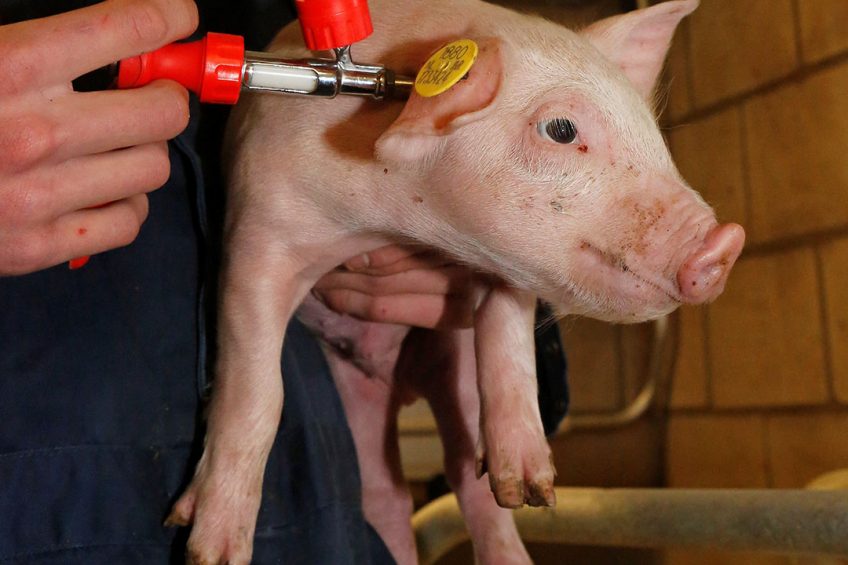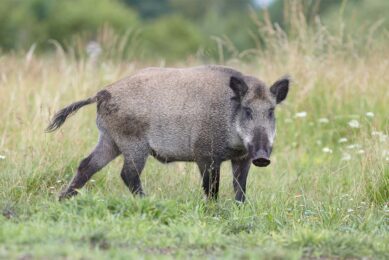Moderate optimism about Chinese ASF vaccine

A mixed bag of comments. That’s how various vaccine experts around the globe have responded to the recent news that Chinese scientists would have managed to develop a ‘safe and efficacious’ vaccine against African Swine Fever. There is optimism as well as questions, as it is unclear whether the vaccine could recombine to become virulent again.
Earlier this week, the Chinese Harbin Veterinary Research Institute reported that a safe and effective live-attenuated vaccine was developed by deleting 7 gene segments from the original virus. The Chinese researchers reported that the vaccine has been tested on both pigs and sows.
Plum Island research also deleted 6 genes
For Dr Gladue, the Chinese approach follows a familiar path. The Plum Island team published similar research in 2015, when 6 out of these 7 genes were deleted and protection against ASF was observed. For that research, the US team zoomed in on the so-called ‘Georgia strain’, i.e. ASF virus as isolated in the country Georgia, which led to the current spread of the ASFv outbreak in Asia and Europe. Dr Gladue told Pig Progress, “The 7-gene deleted virus, is an exact copy of our ASFv-G-dMGF platform, which deletes 6 genes. ASFv-G-dMGF is an effective vaccine in our hands. The Harbin study utilised our ASFv-G-∆MGF deletion and added an additional deletion of the gene CD2.”
The US research at the time also noted that “a proportion of these animals harboured the challenge virus,” which means that a longer-term recombination could be possible.
CD2 gene also deleted by Plum Island team
Very recently, the US team also tried to remove that particular CD2 gene from the ASF virus to see the effects; that research was published in January 2020. In their view removing the CD2 gene did not reduce virulence.
Single deletion of CD2 doesn’t affect virulence in the current outbreak strain.” Dr Gladue told Pig Progress.
As a result, the US researchers chose not to include CD2 as an additional deletion in their vaccine platform. He added, “The CD2 deletion didn’t attenuate the virus, and even at very low doses no observed differences were observed between the CD2 deleted virus and the WT virus. Therefore, it is unlikely that the 7 gene mutant containing the ∆MGF and ∆CD2 deletions would have additional attenuation or be safer as the recombination potential in the MGF region still remains.”

Track the movement of African Swine Fever For everything you need to know about ASF, from the latest outbreaks to controls. Stay up to-date…
He continued to say, “The multigene family genes (MGF) are comprised of many genes on either end of the ASFv genome, and this area of the genome is well known to have a high degree of recombination. Consequently, it wasn’t our top choice to pursue it as a vaccine candidate, as there are some potential safety concerns due to the possibility of recombination in this area.”
Questions about the Chinese research
Dr Gladue has some more questions with the Chinese research. He added: “The current Harbin study is lacking some information that makes it hard to evaluate the vaccines used in their study, for example full length sequencing was not done on any of their vaccine strains, so it is possible that there are other genomic changes in the vaccine sequence that contribute to the reported phenotypes.”
In addition, Dr Gladue mentioned that the Chinese study has some results that appear to differ from their previous studies. “They report partial attenuation of the wild type virus just by deleting CD2 and their ∆UK/∆9GL vaccine did not confer protection as in our previous reports. We believe, these results are likely due to differences in the deletion constructs or additional genetic changes. For example in the Chinese study a larger 9GL deletion was introduced than in our study, which may affect the promoter region of the neighbouring gene.”
In his opinion, the most interesting part of the research is that the Chinese tested the new vaccine candidate in pregnant sows, which wasn’t tried in the United States, and no observed side-effects were observed. This he called ‘promising’, as it would give hope that live attenuated vaccines could be used as an effective tool to control disease outbreaks since live attenuated vaccines are so far the only viable option to protect animals against ASF.
“An important step in vaccine development”
Acknowledging that indeed most of the gene deletion research work had already been done before, she told Pig Progress, “The vaccine paper from China does represent a huge amount of work in testing the safety and efficacy of 6 different gene-deleted ASF based on a Chinese strain. However the current study extends the range of safety tests carried out.”
…an important step forward in vaccine development…” – Dr Linda Dixon
She does have a few concerns as well, one of them related to the question of whether or not the vaccine will remain attenuated in the longer run. She said, “One concern is that one of the viruses, HLJ/18-6GD, reverted to virulence after several passages in pigs. The mechanisms by which this occurred were not further investigated but should be with priority.”
She added that further hurdles remain, such as how can the vaccine production be scaled up commercially.
First results are always hopeful
He said, “Developments have gone fast recently. Globally a very large interest has come into existence for these type of vaccines and in recent years a lot more efforts have been made to develop those.” More attention led to more knowledge, he said. “So it is getting increasingly likely that a vaccine candidate sees the light which will get developed into a real vaccine.”
A real breakthrough could accelerate the process strongly in a very short space of time. A setback, however, could mean years of delay.” – Dr Willie Loeffen.
What will the first vaccine look like?
He added some specific comments about what kind of vaccine the first vaccine will be. He said, “A first vaccine will most likely primarily focus on homologous protection, i.e. only against the strain which is now found outside Africa, and administration using injection. In addition, to be able to also vaccinate wild boar, the vaccine will also have to be available for oral administration – which is quite a challenge in itself.”
“The next step would likely be a demand for broadly applicable vaccines, also for use in Africa, against all different types of strains. That could be possible through one protecting virus strain, or a cocktail of virus strains covering a broad spectrum of circulating viruses. That as well is a huge challenge.”
Many development factors mean that it is difficult to predict how fast things will go, Dr Loeffen said. “A real breakthrough could accelerate the process strongly in a very short space of time. A setback, however, could mean years of delay.”
 Beheer
Beheer








 WP Admin
WP Admin  Bewerk bericht
Bewerk bericht